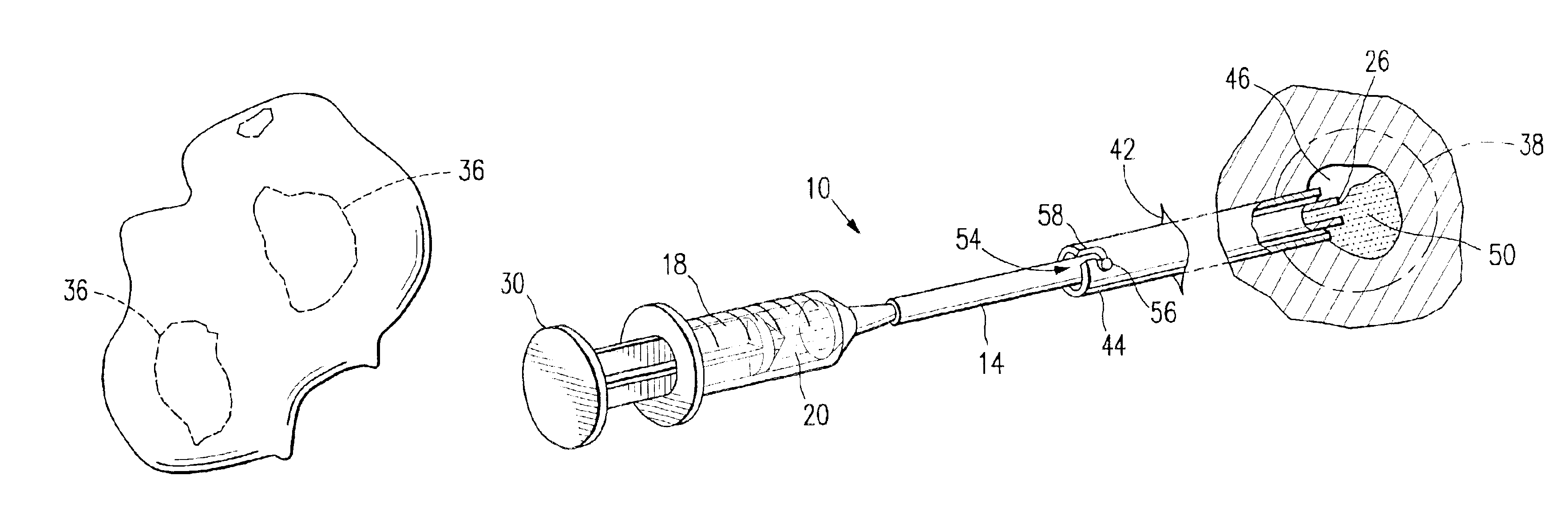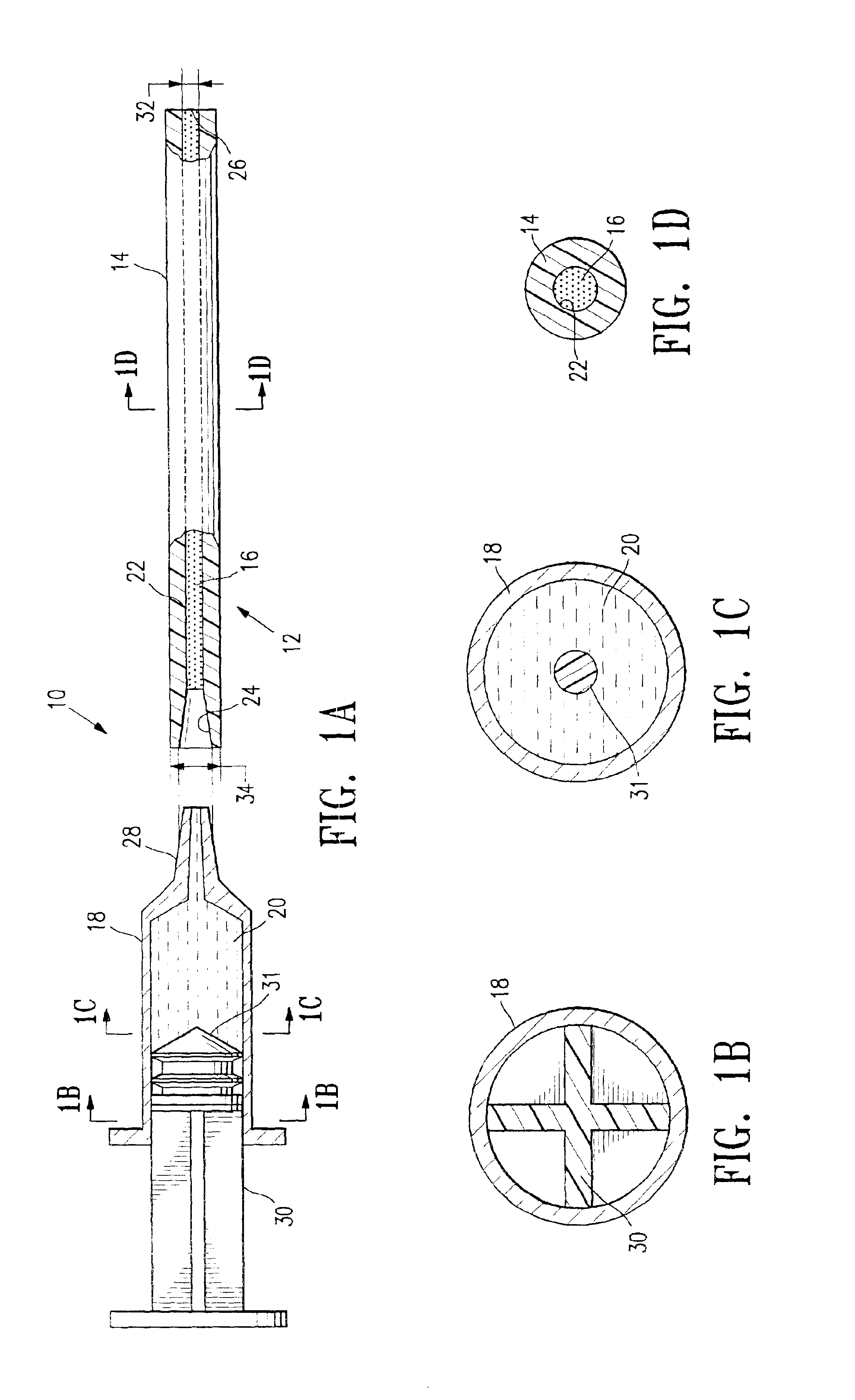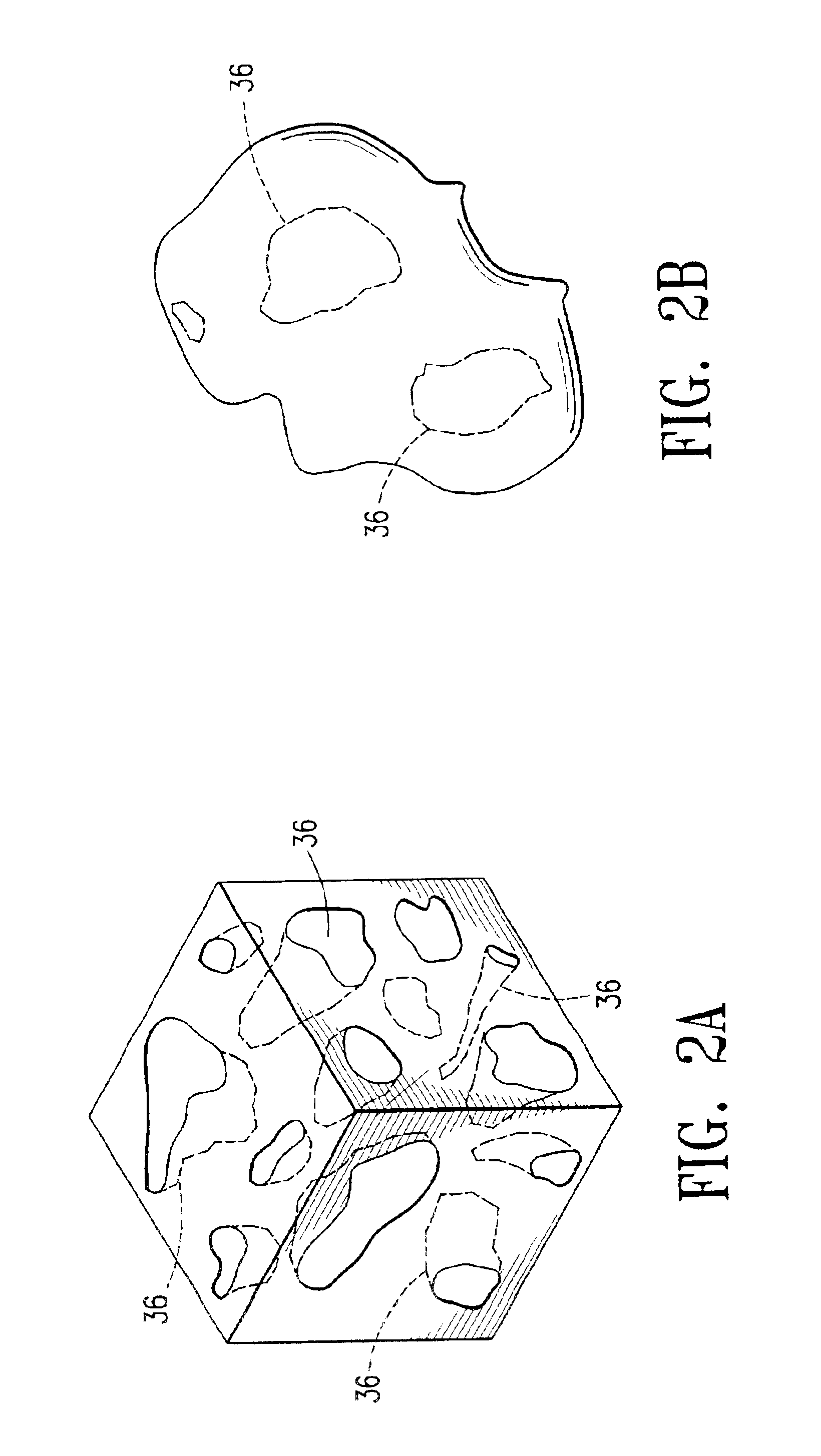Cavity-filling biopsy site markers
a biopsy site and marker technology, applied in the field of cavity-filling biopsy site markers, can solve the problems of treatment being misdirected to undesired locations, affecting the detection accuracy of tissue acquisition, so as to achieve the effect of being easily detectabl
- Summary
- Abstract
- Description
- Claims
- Application Information
AI Technical Summary
Benefits of technology
Problems solved by technology
Method used
Image
Examples
Embodiment Construction
FIGS. 1A-1D illustrate elements of a system 10 embodying features of the invention, including a delivery tube 14 containing a quantity of an ultrasound-detectable bio-resorbable particulate material 16 having features of the invention, and a syringe 18. The system 10 (including tube 14, material 16 and syringe 18) includes an assembly 12 (which includes a delivery tube 14 containing a quantity of ultrasound-detectable bio-resorbable particulate material 16). In FIG. 1A, an assembly 12 is shown oriented to engage with a syringe 18 containing a bio-compatible fluid 20 such as sterile saline. Delivery tube 14 has a bore 22 extending from a receptacle 24 through to an outlet 26. The quantity of ultrasound-detectable bio-resorbable particulate material 16 is contained within bore 22. Receptacle 24 is configured to receive tip 28 of syringe 18 effective to form a fluid-tight engagement. As illustrated in FIG. 1, tip 28 is a luer-lock tip; it will be understood that other tips and locking ...
PUM
 Login to View More
Login to View More Abstract
Description
Claims
Application Information
 Login to View More
Login to View More - R&D
- Intellectual Property
- Life Sciences
- Materials
- Tech Scout
- Unparalleled Data Quality
- Higher Quality Content
- 60% Fewer Hallucinations
Browse by: Latest US Patents, China's latest patents, Technical Efficacy Thesaurus, Application Domain, Technology Topic, Popular Technical Reports.
© 2025 PatSnap. All rights reserved.Legal|Privacy policy|Modern Slavery Act Transparency Statement|Sitemap|About US| Contact US: help@patsnap.com



